Shared from Lifestyle | The Guardian
Named after the central French town of the same name (which, confusingly, also claims a much older almond cake, the pithiviers fondant, as its own), the pithivier is a free-standing puff pastry pie so magnificent that it’s as much centrepiece as dinner. The traditional example, which is not dissimilar to the frangipane-filled galette des rois made to celebrate Epiphany, has a sweet almond centre, though these days a pithivier is just as likely to be savoury.
Indeed, though charcutier Nicolas Verot tells me that “what makes the big difference between a pithivier and a pie [tourte] is that a pithivier contains unchopped meat [or vegetables], unlike a tourte”, though in reality, it seems, anything goes. Pierre Koffman does a pheasant one, Rosie Birkett a version filled with cauliflower cheese, Parisian patissier and celebrity chef Cyril Lignac adds truffle to his pork and cheese number … the list goes on. In fact, the internet is full of recipes for pithiviers stuffed with fish, fruit, and even tofu and mushrooms – chopped and otherwise.
Difficult as it was to narrow it down, I’ve decided to focus on a cheese-and-potato filling, for the sole reason that a pithivier is, in Bake Off parlance, a true showstopper, and in my experience nothing stops shows as well as molten cheese. The advice on the pastry and construction, however, applies whatever you put inside.
The pastry
I’m starting with the pastry because, really, this is what defines the pithivier – without puff pastry, it’s just a pie. It is undeniably more faff than shortcrust to make, but after following the instructions in Calum Franklin’s book The Pie Room, I’m reminded that the time-consuming aspect of the process is waiting for the pastry to chill between rolls and folds, rather than that much active work. I would therefore commend this to you as an opportunity to make your own, not least because I struggled to find butter puff pastry in my local shops, and the non-butter kind available commercially often contains palm oil. Feel free to use whatever you prefer, but do consider having a go for a special occasion (and when else would you make a pithivier?). I haven’t put a recipe below, because, frankly, I couldn’t improve on Franklin’s.
Homemade or not, it’s important that the pastry and the filling are well chilled before you start construction, and I’d recommend rolling it out a bit thinner than the 2-3cm called for by Mark Hix in the Independent (though I suspect that this has to be a typo, so I don’t even try it). I do try a clever, one-sheet version by Caro Blackwell on the Taste of Savoie blog, which involves cutting out pastry like a tulip, then bringing the petals together on top to seal, but I’m too clumsy and end up with a cheese Vesuvius. If you are similarly afflicted, I’d stick with the standard two-sheet method below, instead, welded together with egg wash. Much safer.
The potatoes
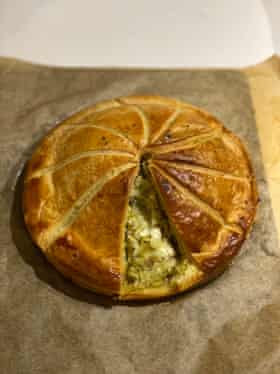
I would not advise adding raw potatoes, however thinly sliced, to a pie, as the Waitrose website suggests; even simmered in stock for two minutes, as Hix recommends, they’re rather crunchy for my testers’ tastes. Much as I love potatoes, they are much better soft. Franklin goes as far as to make a dauphinoise, simmering the spuds in milk and cream, then baking them in a slab before putting them in his pie, which is, of course, extremely popular, but, given that you’ve probably already been busy making pastry, I’m going to keep things simpler with slices of cooked potato, as in Blackwell’s recipe.
Australian food writer Phoebe Wood deserves a special mention for filling her pie with crushed potato. I love mash with a pie, especially when gravy is involved, but we agree that in a pie, we prefer something with a bit more structural integrity, especially because the cheese layer above it should, in a pithivier, be liquid.
The cheese
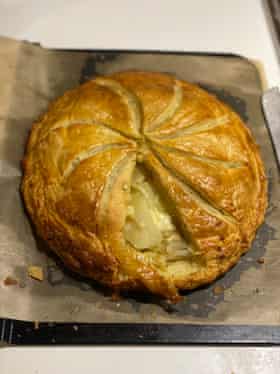
I use lactic lancashire in Hix’s recipe, the results of which remind me pleasurably of our own cheese-and-onion pies, and tangy, mature cheddar in Franklin’s; the Waitrose version demands nutty gruyere and Wood salty crumbled feta. All, of course, are very tasty – potatoes and cheese always make a handsome couple – with the feta in particular adding a refreshingly light, summery note, but I’m after a cheese that will melt almost like a gravy, which makes Blackwell’s Alpine reblochon the obvious candidate. Reblochon is not the easiest cheese to get hold of and, good as it tastes, its chief attraction is the obliging way it behaves when heated, so also bear in mind camembert, baron bigod, wigmore, vacherin mont d’or, tunworth and brie, all of which should work well, as will most other soft rinded cheeses. That said, if you prefer, substitute roughly 150g grated hard cheese, instead.
The extras
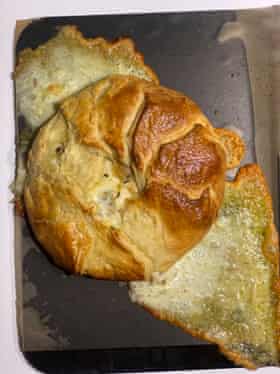
You could leave it at potatoes and cheese, frankly, but you may wish to add a vegetable, too, to make the filling a bit less dense – Franklin adds a layer of caramelised onions, Hix and Blackwell use raw onions, and Waitrose goes for garlic. I’ve chosen Wood’s sauteed leeks, because I like their sweetness with cheese and also because the likes of a pithivier should delight the eye as well as the tastebuds, and they add a happy flash of green to proceedings. You could also opt for a layer of butternut squash, as Waitrose suggests, if you’d like to make it really colourful, or Barney Desmazery’s celeriac – or, indeed, any vegetable you like, though, as ever with pastry, I’d strongly counsel ridding it of as much water as possible before letting it anywhere near the puff.
Because of the nature of the cheese I’m using, I don’t think the potatoes need the creamy sauce that some recipes include, but I will be adding some bacon lardons, as in Blackwell’s almost tartiflette-like filling, because their savoury flavour works so well with the other ingredients. If you’d prefer to keep your pithivier meat-free, however, rest assured that you will not be missing out by omitting them.
The seasoning
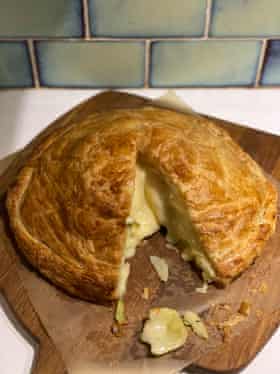
I don’t think you need to get too clever here, so I won’t be adding fennel or caraway seeds, as Wood does, or rosemary (both Franklin and Desmazery); a pinch of thyme and a grating of nutmeg with the leeks will do. Don’t be tempted to gild the lily; this dish is magnificent enough on its own.
Perfect cheese and potato pithivier
Prep 10 min
Chill 30 min
Cook 1 hr 20 min
Serves 4-6
1kg fairly large potatoes, preferably waxy ones (eg charlotte or desiree)
Salt
100g unsmoked bacon lardons, or chopped thick-cut bacon (optional)
2 sprigs fresh thyme, picked
1 tbsp oil, or butter
4 large leeks, trimmed, washed and sliced
Nutmeg, to taste
700g puff pastry (see introduction)
Flour, for rolling
1 medium soft cheese (eg reblochon, camembert, brie, vacherin, Baron Bigod)
1 egg, beaten with a little water
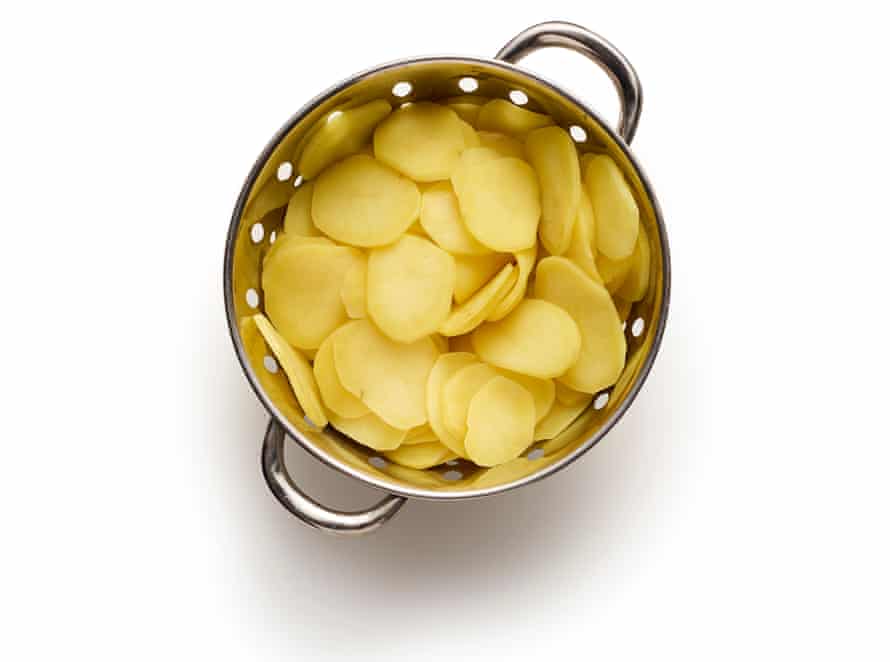
Bring a large pan of salted water to a boil. Meanwhile, peel and thinly slice the potatoes, add them to the pan and boil for about six to eight minutes, until tender but not falling apart. Drain well.
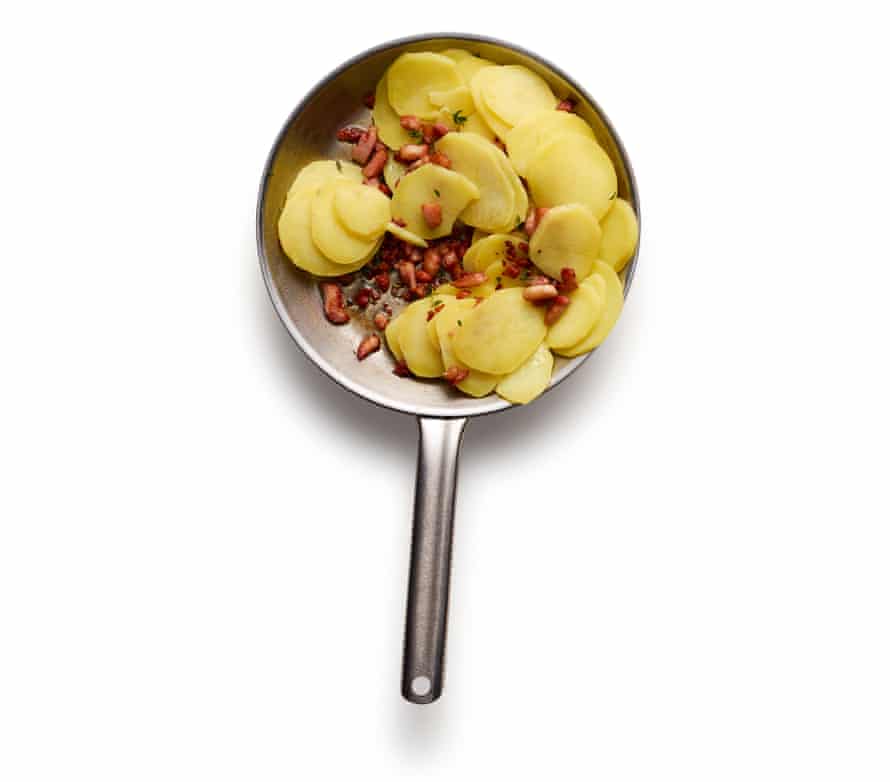
If omitting the bacon, skip to the next step. If not, fry the lardons in a large frying pan over a medium heat until it’s lightly golden and starting to give off its oil. Stir in the thyme, then add the potatoes and toss gently to coat, being careful not to break them up. Season generously, then tip into a bowl and leave to cool completely.
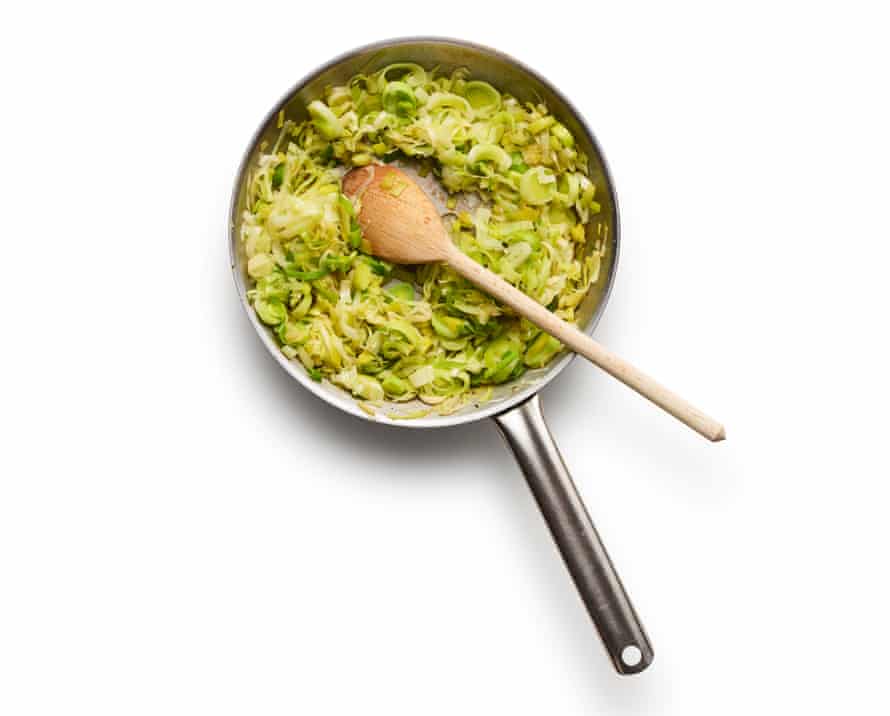
Heat the fat over a medium-low heat in the same frying pan, then saute the leeks until soft but not browned. Season with salt and a little nutmeg, and, if you’re not using bacon, add the thyme now as well. Leave to cool completely.
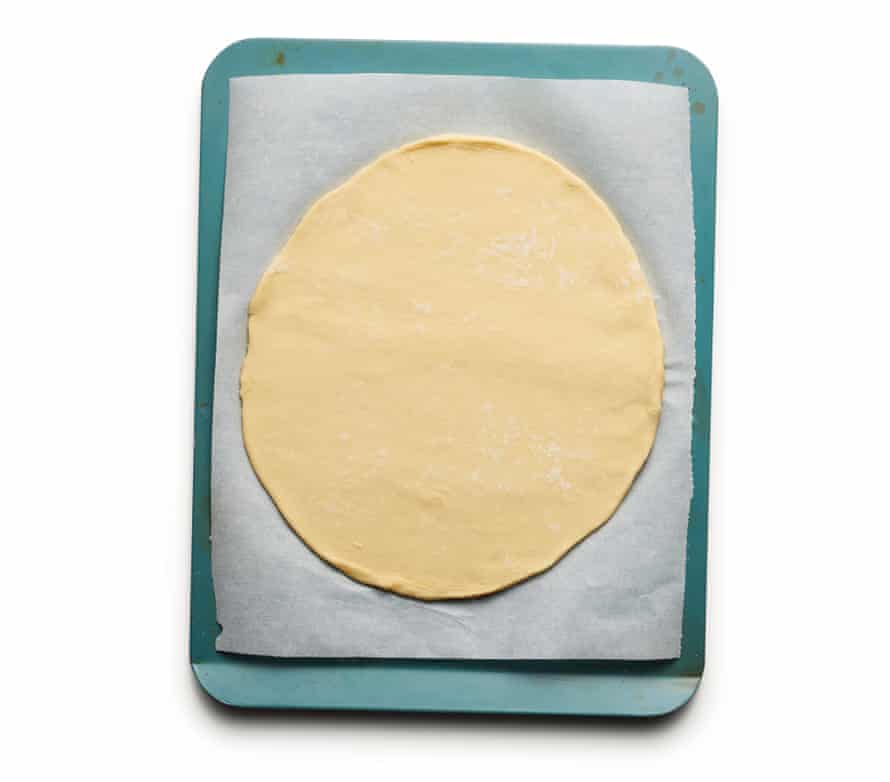
Meanwhile, divide the pastry in two, wrap one half well and put it back in the fridge. Roll out the remaining pastry half on a lightly floured surface to about 5mm thick, then cut out a circle the size of a large dinner plate and put on a lined baking sheet. Chill until the filling ingredients are cold.
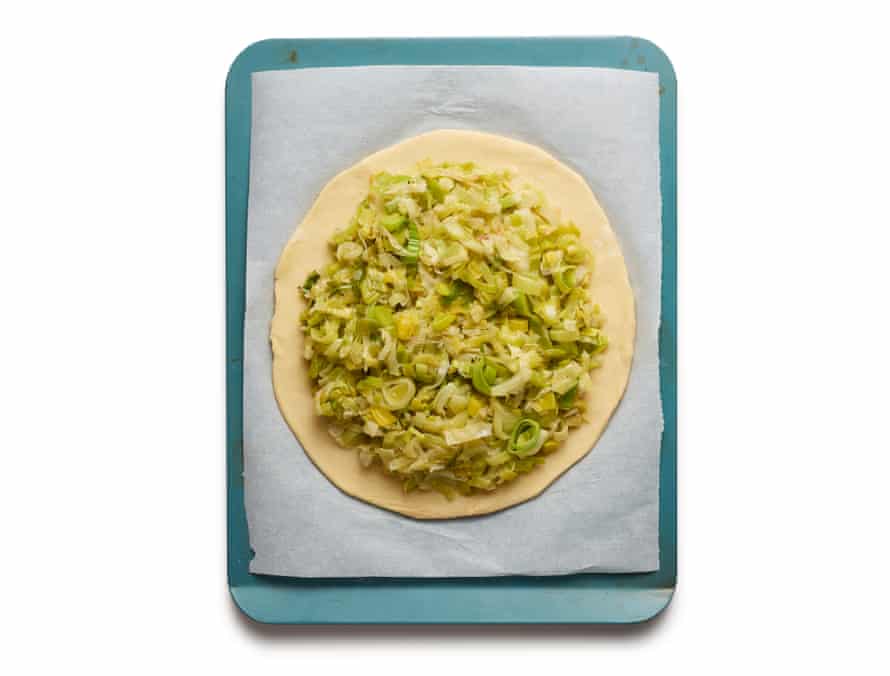
Spread out the cooled leeks in the middle of the pastry circle, leaving a couple of centimetres free around the edges …
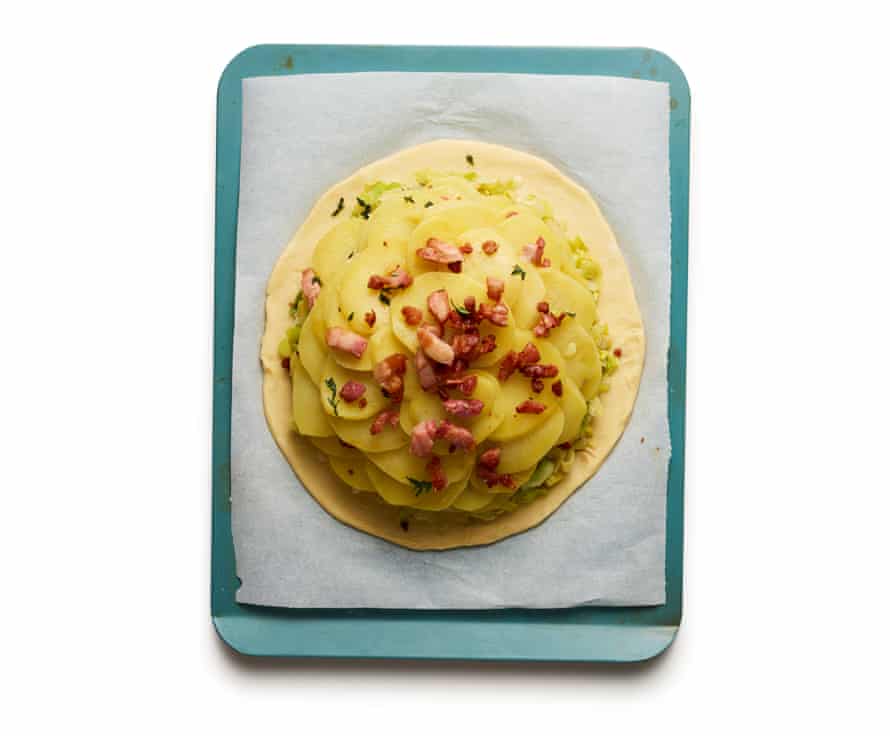
… then arrange the potato and lardons mix on top.
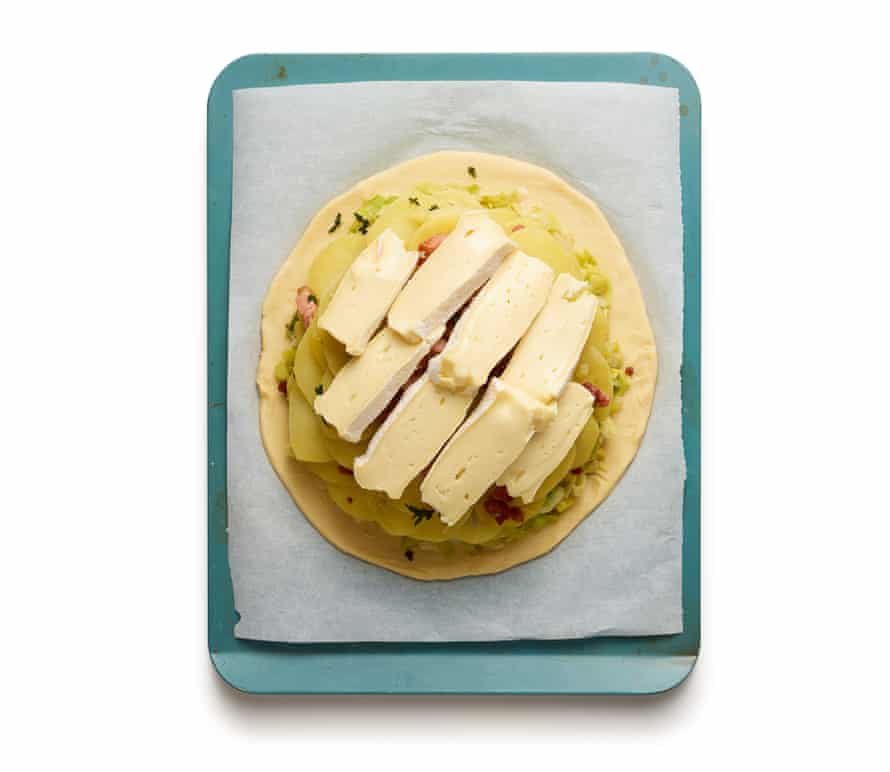
Push the cheese down on top of the potatoes, building the potatoes up around it to give the filling a gently rounded profile.
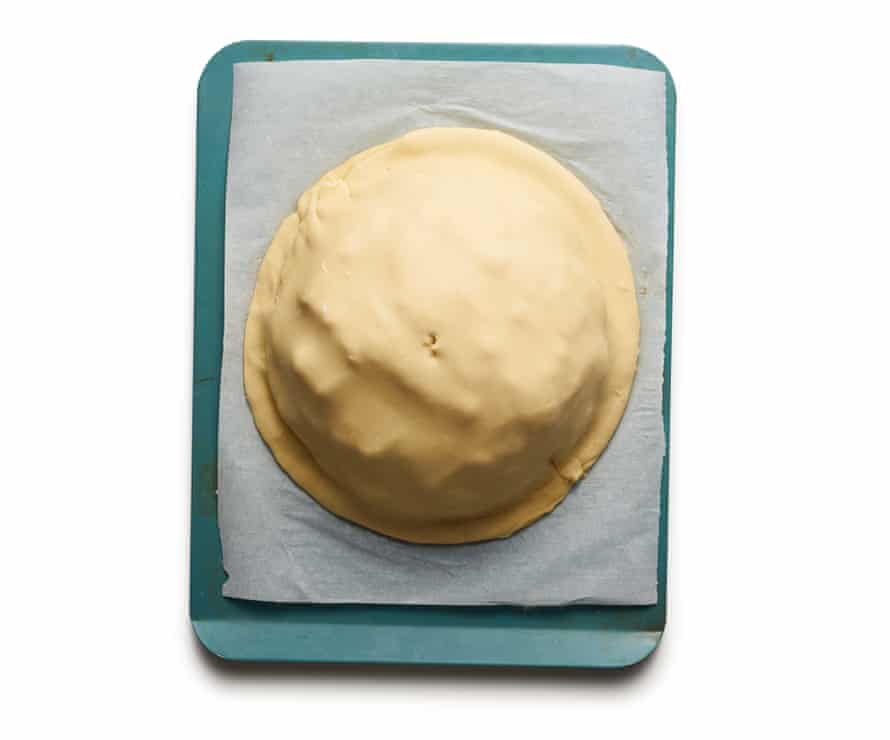
Roll out the second half of the pastry into a circle a little larger than the first. Brush the edges of the filled piece of pastry with egg wash, then carefully drape the second sheet over the top and press down all around the edges to seal.
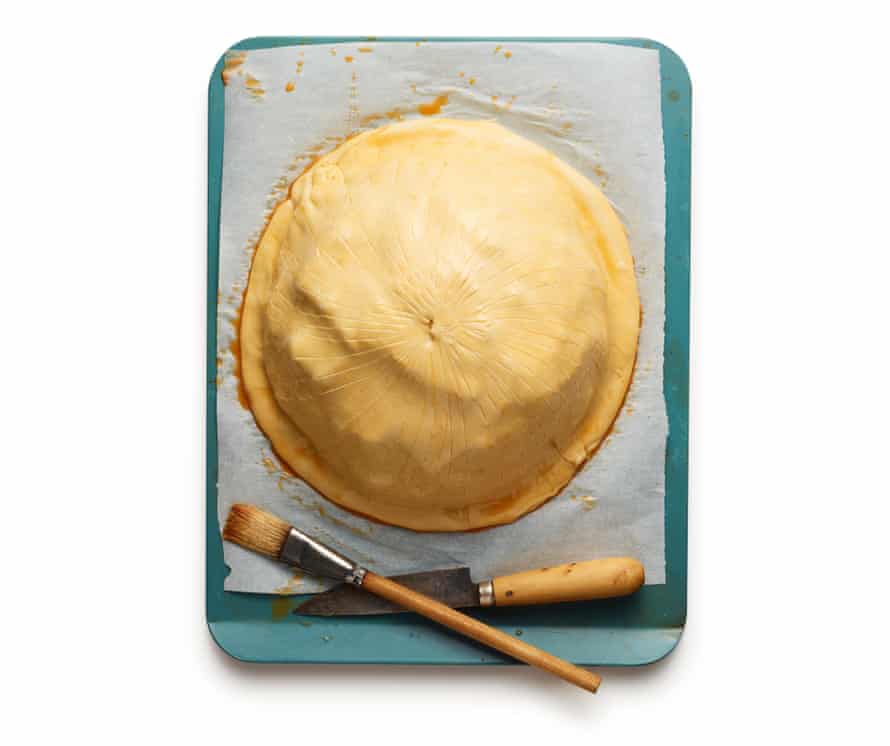
Cut a small hole in the centre of the top, then score curved lines all over the top down from the hole to the edge, being careful not to cut all the way through. Brush with egg, then chill for 30 minutes.
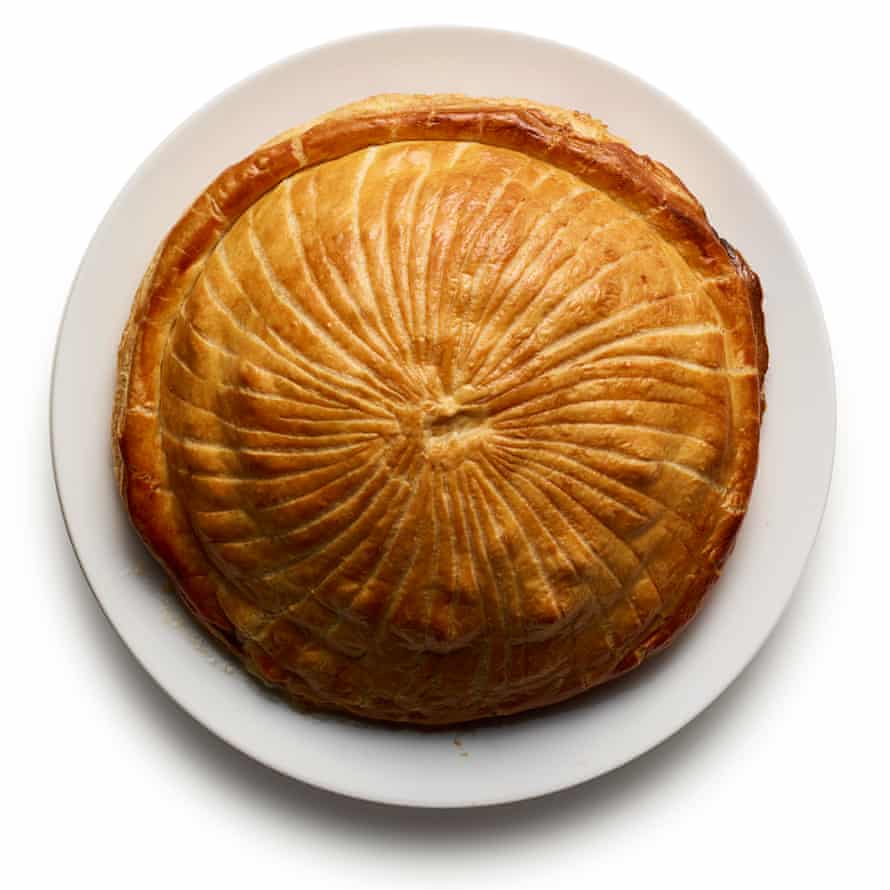
Heat the oven to 200C (180C fan)/390F/gas 6. Bake the pithivier for 35-45 minutes, until golden, and serve hot.
The pithivier: are you a frangipane traditionalist, or do you agree that this beautiful pie is too good to confine to dessert? And, if so, what do you like to put in yours?
Images and Article from Lifestyle | The Guardian

